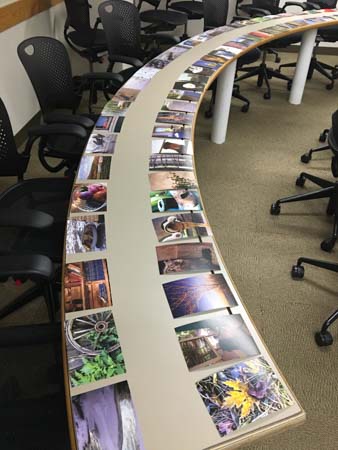(This story first appeared in the Pegasus Communications Systems Thinker newsletter in 2011. I’m reposting it now that it’s been updated to reflect my current offerings.)
Facilitating introductions in a group

I’ve been facilitating group experiences for more than 30 years. One of the first things I learned was the importance of creating a sense of safety so that people can fully participate in the work they have gathered to do together. The best way to begin that process is to give participants a chance to check in and introduce themselves.
Early on, I found that the standard introductory, “Tell us your name, what you do, and why you are here,” was never very satisfying. People usually responded by giving their “elevator speeches”–what they had been coached to say at networking events. These often came across as a rote recitation of a canned response with no life or authenticity.
I wanted to hear more. I wanted to have a glimpse of the person behind the introduction. I wanted something solid and real and human. So began my quest for a way to bring the whole person into the room. There are lots of ice-breaker exercises out there that are designed to do that. But quite honestly, many of them felt contrived and most were not appropriate for the kinds of groups I was running.
The power of photography to create human connection
As a visual person, I was especially drawn to images that could be used to engage both the right and left brains. I found that when I combined a selection of images with a targeted question, participants would begin to share so much more of themselves than if I simply asked, “Tell us something about yourself.” Instead, I would say, “Find a photo that captures or represents…”
- Who you are in this moment
- How you currently feel about [the issue at hand]
- What you hope we accomplish by the end of our time together
- The essence of [the issue at hand]
- A quality you’d like to bring to this meeting
For a long time, the problem was that I needed a large number of a wide variety of images so that people had plenty to choose from. I tried collecting pictures from magazines (too commercial and not durable enough to withstand continuous use), postcards (it took too long to gather the variety I was looking for), and specialty cards like Tarot decks and other decks with images on them (the images were never quite right for my purposes).
The power of a photo and a question to enhance the conversation

I had been taking photographs for years, but not the kind you put in a photo album for the family or send to friends documenting an event. My photos were always quirky … an interesting door, a part of a curb, an unusual perspective.
At the same time, I had become increasingly interested in conversational methodologies like the Art of Hosting and the Flow Game, where I discovered the power of a really good question. I wanted to develop my skill at designing the kinds of questions that would evoke interesting conversations.
In January of 2009, I combined my love of photography with my desire to practice asking questions into my Revealed Presence daily photo blog. For five years I posted a photo and a question as a daily practice, and to this day I continue posting on a regular basis. From this daily practice I accumulated a large number of photos and questions that, in fact, work quite well for group introductions, check-ins, and deepening conversations. I have since drawn from this vast archive of photos and questions to create sets of cards that can be used as photographic facilitation tools:
- Revealed Presence® Story Cards are offered in three separate decks of postcard sized inspirational photo cards. Each card has an image on the front side and a question on the back. These cards are designed to elicit stories. They are ideal ice-breakers or conversation starters. They can also be used to take the “temperature” of emotions or frames of mind in a team meeting or discussion.
The point is that images, especially when combined with provocative questions, can provide an excellent jumping off point for deepening conversations, solving problems, and creating a sense of trust and connection.
